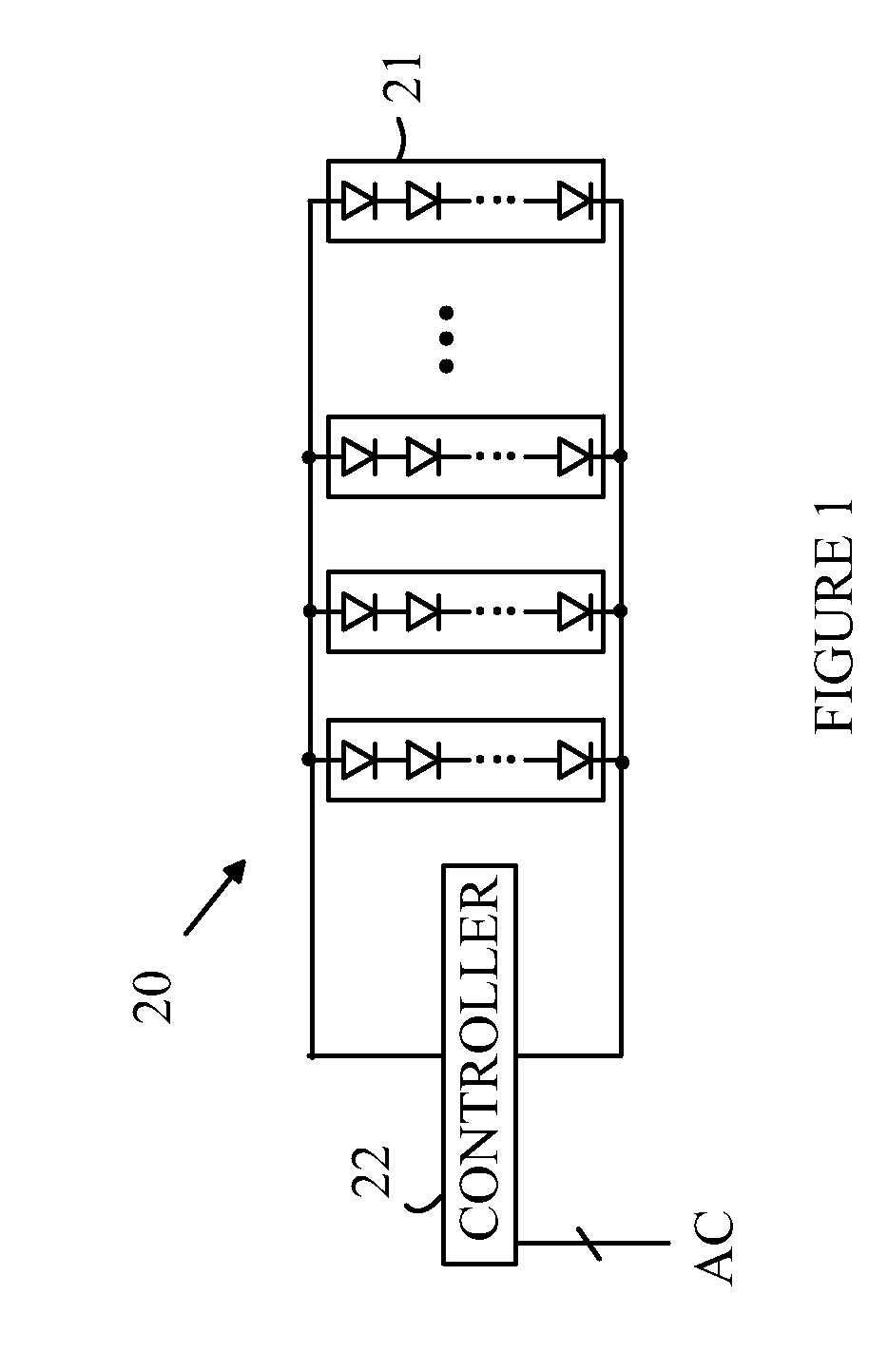Light Sources Utilizing Segmented LEDs to Compensate for Manufacturing Variations in the Light Output of Individual Segmented LEDs
a technology of led light source and led light source, which is applied in the direction of lighting and heating apparatus, process and machine control, instruments, etc., can solve the problems of limited power level at which an led can be operated, inability to generate sufficient light for single led light source, and reduced led li
- Summary
- Abstract
- Description
- Claims
- Application Information
AI Technical Summary
Benefits of technology
Problems solved by technology
Method used
Image
Examples
Embodiment Construction
[0021]The manner in which the present invention provides its advantages can be more easily understood with reference to FIG. 1, which illustrates one embodiment of a light source according to the present invention. Light source 20 includes a plurality of Segmented LEDs 21 that are connected in parallel to a DC constant current source. The average current through each Segmented LED is set by controller 22, which includes an AC to DC power converter.
[0022]Segmented LEDs are discussed in detail in co-pending U.S. patent application Ser. No. 12 / 208,502, filed Sep. 11, 2008, which is hereby incorporated by reference. A detailed discussion of a Segmented LED will also be provided below. For the purposes of the present discussion, it is sufficient to note that each Segmented LED is defined to be a single LED die that is divided into N segments that are serially connected to one another, where N>1 and typically between 2 and 100. Each segment is, in effect, a small LED. The area of each Seg...
PUM
| Property | Measurement | Unit |
|---|---|---|
| output voltage | aaaaa | aaaaa |
| drive voltage | aaaaa | aaaaa |
| driving voltage | aaaaa | aaaaa |
Abstract
Description
Claims
Application Information
 Login to View More
Login to View More - R&D
- Intellectual Property
- Life Sciences
- Materials
- Tech Scout
- Unparalleled Data Quality
- Higher Quality Content
- 60% Fewer Hallucinations
Browse by: Latest US Patents, China's latest patents, Technical Efficacy Thesaurus, Application Domain, Technology Topic, Popular Technical Reports.
© 2025 PatSnap. All rights reserved.Legal|Privacy policy|Modern Slavery Act Transparency Statement|Sitemap|About US| Contact US: help@patsnap.com



